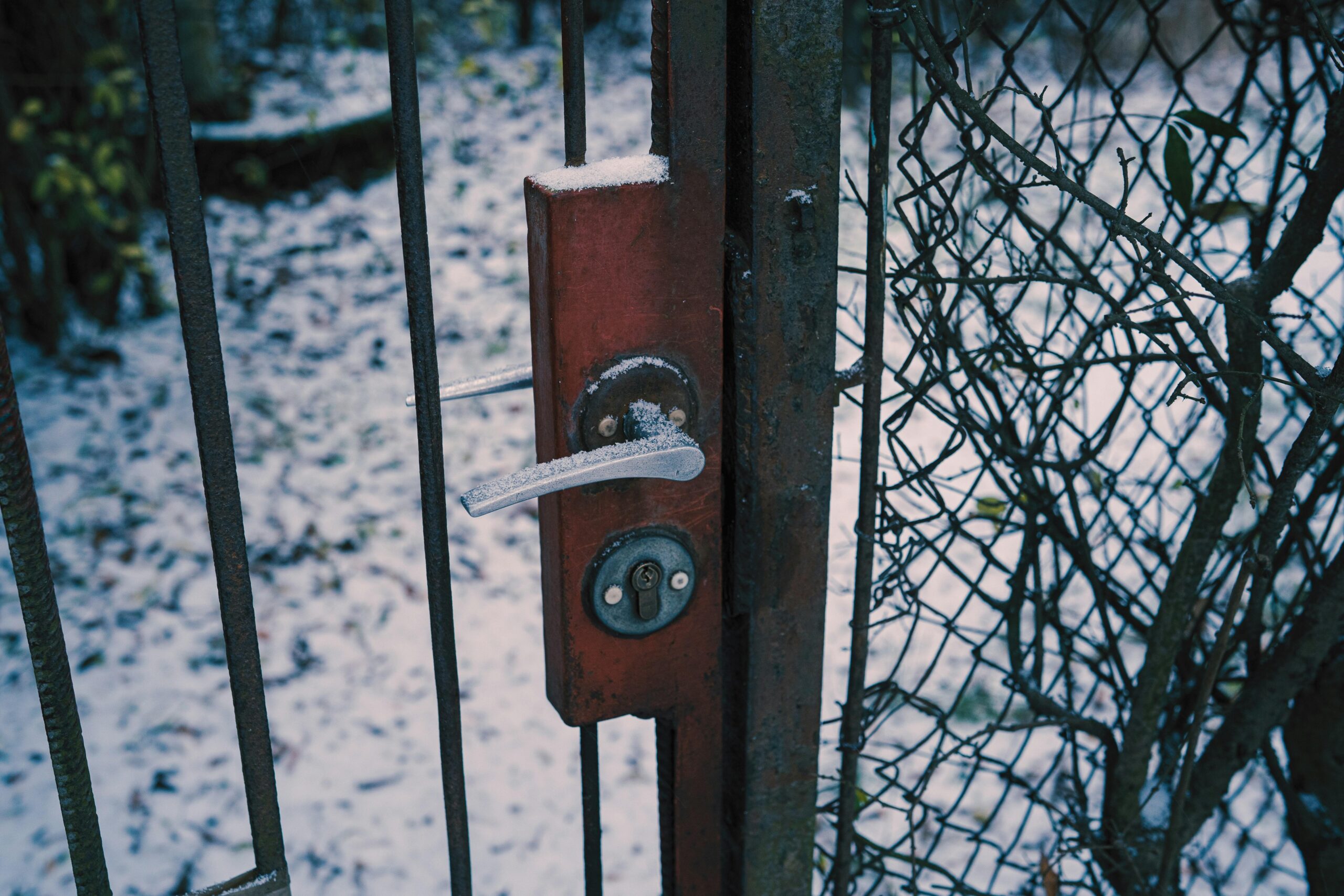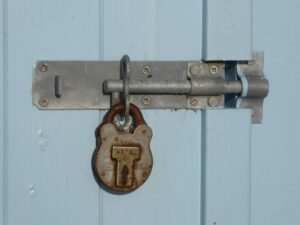In business, doors represent more than entryways — they protect assets, regulate access, and ensure operational flow. But even the toughest commercial locks eventually fail. When that happens, downtime, frustration, and vulnerability can follow.
Understanding common commercial lock problems (and their real-world fixes) can save your business both time and security headaches. Whether it’s a jammed key, misaligned door, or malfunctioning access system, timely diagnosis and maintenance prevent small issues from escalating into costly repairs or safety risks.
1. Jammed or Stuck Keys
Few problems are as common — or as inconvenient — as a key getting stuck. It’s often caused by dirt buildup, worn key teeth, or a slightly warped cylinder. Excessive force only worsens the situation and risks snapping the key.
Professional Fix:
A locksmith will inspect the pins, lubricate the mechanism using a non-greasy graphite or silicone spray, and test key alignment. If the cylinder’s worn or bent, they may rekey or replace the core. Regular cleaning and periodic key duplication (instead of using worn keys) prevent recurrence.
2. Misaligned Door and Latch
Commercial doors see heavy use, and over time hinges loosen or the frame shifts. When the latch no longer lines up with the strike plate, doors won’t close smoothly — or won’t latch at all.
How It’s Fixed:
Adjustment starts with tightening hinges and repositioning the strike plate. If wear has warped the frame, the locksmith may file the latch opening or add hinge shims to realign the door. Proper closure is essential for both function and fire safety compliance.
3. Spinning Lock Cylinder
If your key turns endlessly without engaging, the lock’s internal tailpiece or set screws are likely detached. This issue is common in aging commercial cylinders or those that endure constant turning pressure, such as entry doors and storage areas.
Solution:
A professional will remove the cylinder, repair or replace damaged tailpieces, and reinforce screws with thread locker. This prevents total mechanical failure — which could otherwise trap you outside (or inside) unexpectedly.
4. Broken Key Inside the Lock
When a key snaps, a small fragment often stays lodged in the keyway. It can happen from over-torqueing, extreme temperatures, or metal fatigue — especially on older brass keys.
The Fix:
Locksmiths use precision extractors or tweezers to remove the fragment without harming internal pins. If the key broke due to worn teeth, a replacement key is cut using the original’s code. Avoid inserting anything metallic yourself — it can push debris deeper and damage pin chambers.
5. Rusted or Corroded Hardware
Outdoor or high-moisture environments (like coastal facilities or loading docks) expose locks to oxidation and corrosion. Over time, rust seizes internal parts and weakens metal integrity.
Repair Approach:
Severe corrosion often requires replacement, but mild oxidation can be cleaned using rust removers and lubricants. A commercial locksmith may suggest stainless steel or weather-resistant locks with protective coatings for long-term prevention.
6. Faulty Electronic or Smart Locks
Modern offices use keypad, card, or biometric locks — great for convenience but not immune to technical failure. Battery depletion, wiring issues, and software glitches can lock employees out.
What Experts Do:
Technicians troubleshoot by checking power sources, recalibrating circuits, and restoring access credentials. They’ll also recommend routine maintenance intervals — such as quarterly battery checks and software updates — to keep electronic systems reliable.
7. Door Closer and Latch Coordination Issues
If your door slams too hard or doesn’t fully close, your door closer and latch might be out of sync. This isn’t just an annoyance; it’s a serious security gap that allows doors to remain partially open.
Solution:
A locksmith adjusts the closer’s hydraulic tension and checks latch projection. In offices with heavy fire-rated doors, correct pressure balance is crucial for safety compliance and insurance validity.
8. Worn Keys and Cylinders
Constant use erodes key ridges and cylinder pins. This causes inconsistent key turns and requires jiggling to open — an early sign of mechanical fatigue.
Repair or Replace?
If caught early, rekeying or re-pinning restores performance. Severely worn locks should be upgraded to commercial-grade cylinders, especially in high-traffic entryways.
9. Lock Mechanism Freezing or Sticking in Winter
Cold air causes metal to contract, trapping moisture and freezing components. Attempting to turn the key under force can break internal pins.
Safe Fix:
Use de-icing sprays or gentle heat on the key (never boiling water). Locksmiths may also apply freeze-resistant lubricants or fit weather shields to prevent future lock freezing.
10. Forgotten or Outdated Access Credentials
In digital systems, lost codes, expired access cards, or unremoved employee credentials can effectively “lock out” authorized users.
Best Resolution:
A commercial locksmith with access control expertise can reprogram cards, update PIN databases, and audit your entry logs to restore efficient key management. They may also suggest transitioning to cloud-based credential systems for real-time control.
Recognizing the Early Warning Signs
Business owners often wait until a lock fails entirely — but most problems give subtle warnings first. If your key catches, the door needs pressure to latch, or the handle feels loose, don’t ignore it. Timely attention prevents full lockouts and preserves hardware life.
Preventive Care and Maintenance
Proper lock care saves money and stress. Every business should:
-
Schedule annual inspections by a qualified locksmith.
-
Lubricate moving parts every six months.
-
Check battery-operated systems quarterly.
-
Keep duplicate keys secured but accessible.
-
Train staff to report issues early rather than forcing locks.
Preventive maintenance ensures smoother operation and extends the lifespan of expensive commercial hardware.
Table: Common Lock Problems and Professional Solutions
| Problem | Typical Cause | Recommended Fix | Urgency Level |
|---|---|---|---|
| Jammed Key | Dirt or worn pins | Clean, lubricate, rekey | Moderate |
| Misaligned Door | Frame shift or loose hinges | Adjust hinges/strike plate | High |
| Broken Key | Fatigue or misuse | Extract and duplicate | High |
| Spinning Cylinder | Detached tailpiece | Reconnect or replace | High |
| Frozen Lock | Cold weather/moisture | Apply de-icer, lubricate | Moderate |
| Failing Smart Lock | Battery/software issue | Replace power, update firmware | High |
| Rust/Corrosion | Humidity exposure | Clean or replace hardware | Moderate |
| Door Closer Misalignment | Loose mount | Adjust tension and latching speed | Medium |
| Worn Cylinder | Heavy use | Rekey or replace | High |
| Lost Access Credentials | Human error | Reprogram or audit system | High |
Final Thoughts: Maintenance Is Cheaper Than Repair
Commercial locks endure constant strain — dozens, even hundreds of uses each day. Like any mechanical system, they need maintenance, not just emergency fixes. A professional locksmith doesn’t just repair problems; they prevent them.
By keeping locks clean, aligned, and updated, you ensure uninterrupted business flow and safety — protecting not only doors, but also trust, reputation, and productivity.
FAQs
1. Why do office locks wear out faster than residential ones?
Because of higher daily use and heavier doors, office locks endure greater mechanical stress, causing faster wear and tear.
2. Can one faulty door lock affect others in a master key system?
Yes. A damaged cylinder can disrupt key rotation or compatibility in multi-lock systems. Timely repair preserves master key consistency.
3. How can I tell if my lock needs replacement or rekeying?
If the hardware still functions smoothly, rekeying is enough. Replace when the lock is physically damaged, corroded, or outdated.
4. Are electronic locks more reliable than mechanical ones?
They offer advanced control and tracking, but depend on batteries or power. Regular testing ensures equal reliability.
5. What is the best maintenance schedule for commercial locks?
Have locks inspected annually and lubricated every six months. Digital locks require more frequent checks for software and power issues.
6. Can weather really damage indoor locks?
Yes. Humidity and temperature changes affect metal expansion, leading to sticking or internal corrosion, even indoors.
7. What’s the first thing to do when a key breaks inside?
Avoid forcing or poking it. Call a locksmith immediately to prevent internal damage that might require a full replacement.
8. How do locksmiths fix rusted locks?
They clean internal parts, apply corrosion inhibitors, or replace worn cylinders with stainless-steel components.
9. Is it cheaper to maintain locks or replace them periodically?
Routine maintenance is far more affordable and extends the lifespan of quality hardware by years.
10. How can I minimize commercial lock problems long term?
Use high-grade hardware, schedule preventive servicing, keep spare keys managed properly, and partner with a professional locksmith for ongoing maintenance.





